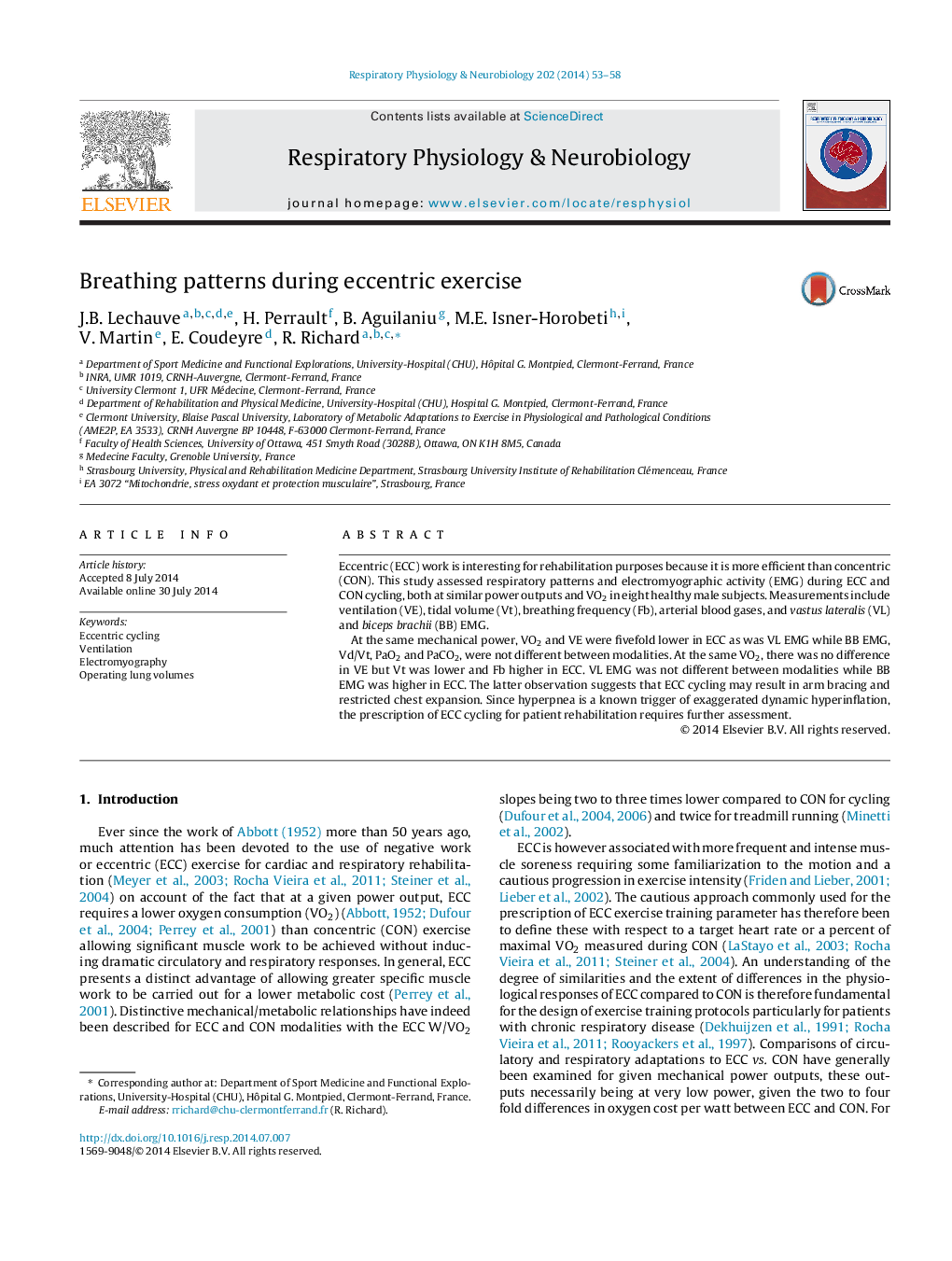| Article ID | Journal | Published Year | Pages | File Type |
|---|---|---|---|---|
| 2846909 | Respiratory Physiology & Neurobiology | 2014 | 6 Pages |
•We compare ergocycle exercise between concentric and eccentric.•We compare these exercises modalities at same mechanical power and same oxygen consumption.•Respiratory patterns were different at same oxygen consumption between two modalities.•EMG activities were different at same oxygen consumption between two modalities.•Body position on the seat may be in link with these adaptations.
Eccentric (ECC) work is interesting for rehabilitation purposes because it is more efficient than concentric (CON). This study assessed respiratory patterns and electromyographic activity (EMG) during ECC and CON cycling, both at similar power outputs and VO2 in eight healthy male subjects. Measurements include ventilation (VE), tidal volume (Vt), breathing frequency (Fb), arterial blood gases, and vastus lateralis (VL) and biceps brachii (BB) EMG.At the same mechanical power, VO2 and VE were fivefold lower in ECC as was VL EMG while BB EMG, Vd/Vt, PaO2 and PaCO2, were not different between modalities. At the same VO2, there was no difference in VE but Vt was lower and Fb higher in ECC. VL EMG was not different between modalities while BB EMG was higher in ECC. The latter observation suggests that ECC cycling may result in arm bracing and restricted chest expansion. Since hyperpnea is a known trigger of exaggerated dynamic hyperinflation, the prescription of ECC cycling for patient rehabilitation requires further assessment.
